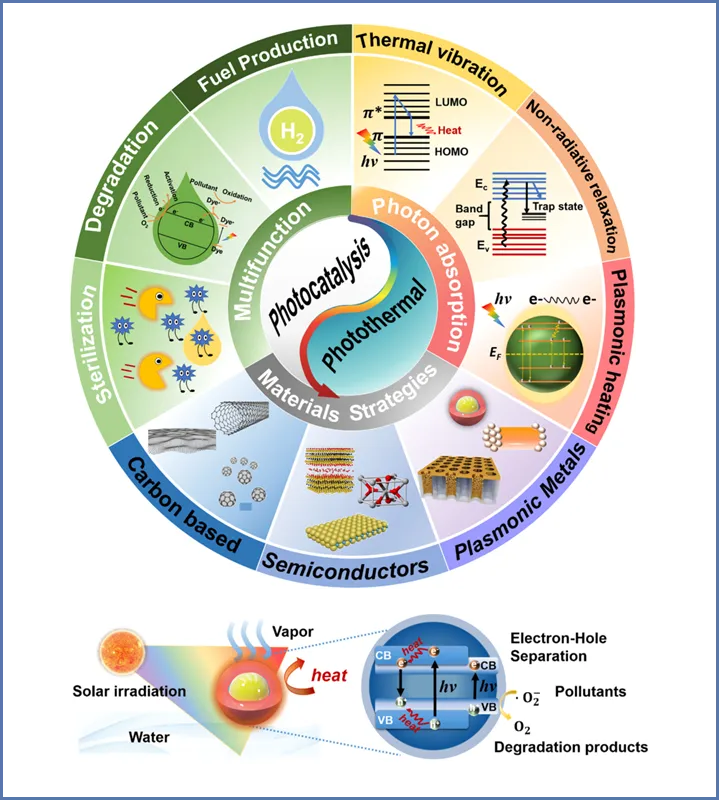Yan Zhao, M.Sc.
Technische Universität München
Lehrstuhl für Thermodynamik (Prof. Wen)
Postadresse
Boltzmannstr. 15
85748 Garching b. München
- Tel.: +49 (89) 289 - 16197, 16236
- Raum: 5507.EG.707
- y.zhao@tum.de
Research project
Coupling solar-driven photothermal effect into photocatalysis for fuel production and sustainable water treatment
Background
With the global energy crisis and increasing environmental pollution, the development of renewable energy is imperative. Solar energy, which is clean, sustainable and sufficient to meet the global energy demand, is considered as a promising alternative to fossil fuels. Using solar irradiation to drive chemical catalytic reactions is an attractive way to solve both energy crisis and environmental problems. Thus, energy and environment can be fulfilled in one process for sustainable energy conversion.

Research Objective
The purpose of this research project is to design a bifunctional photothermal-photocatalysis system based on interfacial heating reactor, which can couple solar-driven photothermal effect with chemical photocatalysis reaction. This strategy shows potential applications including sustainable water treatment, photocatalytic degradation and hydrogen production. The synergistic system intends to achieve full-spectral utilization of solar irradiation and to drive chemical reactions more efficiently under natural sunlight.

Research Content
1) Reasonable materials select and engineer
Through the engineering of material components, the photocatalytic system composed of integrated photothermal-photocatalytic materials with excellent thermal and mass transfer ability can be achieved. The obtained system should have superior full-spectrum solar energy absorption (300-2500nm), good mechanical behaviors, and also adapt to various complex and harsh situations (i.e., different levels of pH and salinity). In this research, an easy-to-manufacture, long-term, low-cost, environmentally-friendly photothermal conversion system is developed.
2) Systematic structure design
The design of a floatable photocatalytic platform using a local interfacial heating method allows heat to be localized at the air-liquid interface rather than throughout the entire liquid. This helps to minimize the amount of materials used, reduce thermal losses, and improve energy conversion efficiency. During this process, generated hydrogen can evaporate out of reactive sites and lead to a local excess of reactants and thereby thermo-dynamically driving the reaction forward. The nanocomposites at the air-water interface feature efficient light delivery, facile supply of water and instantaneous gas separation, which can maximize the photocatalytic activity.
3) Theoretical calculation
In addition to experimental results, analytical approaches including Finite element analysis (FEA), Density functional theory (DFT), and Molecular dynamics (MD) could also be chosen to further verify the mechanism of the process of photothermal and photocatalysis. FEA can be used to study the heat distribution and water transportation in the catalyst. DFT can investigate the electronic structures or adsorbed species and intermediates on the surface active sites to reveal the mechanisms in the photocatalysis. MD simulations can help to find the adsorption affinity of the photocatalyst components towards the target organic pollutant molecules.